From the moment of its inception, the genre has been concerned with the promise and peril of breaking from modernity
The body of work loosely contained under the label of Afrofuturism exists within two radically distinct but conceptually overlapping timelines. The first encompasses the history of the United States but focuses its attention on slavery and its aftermath, traced all the way into the current century – the longue durée. Consider the paintings assembled for the recently opened In the Black Fantastic exhibition at London’s Hayward Gallery. Ellen Gallagher’s canvases, depictions of survivors of the Middle Passage – thrown overboard but living in technologically advanced cities beneath the surface – represent the more radical wing of this first approach.
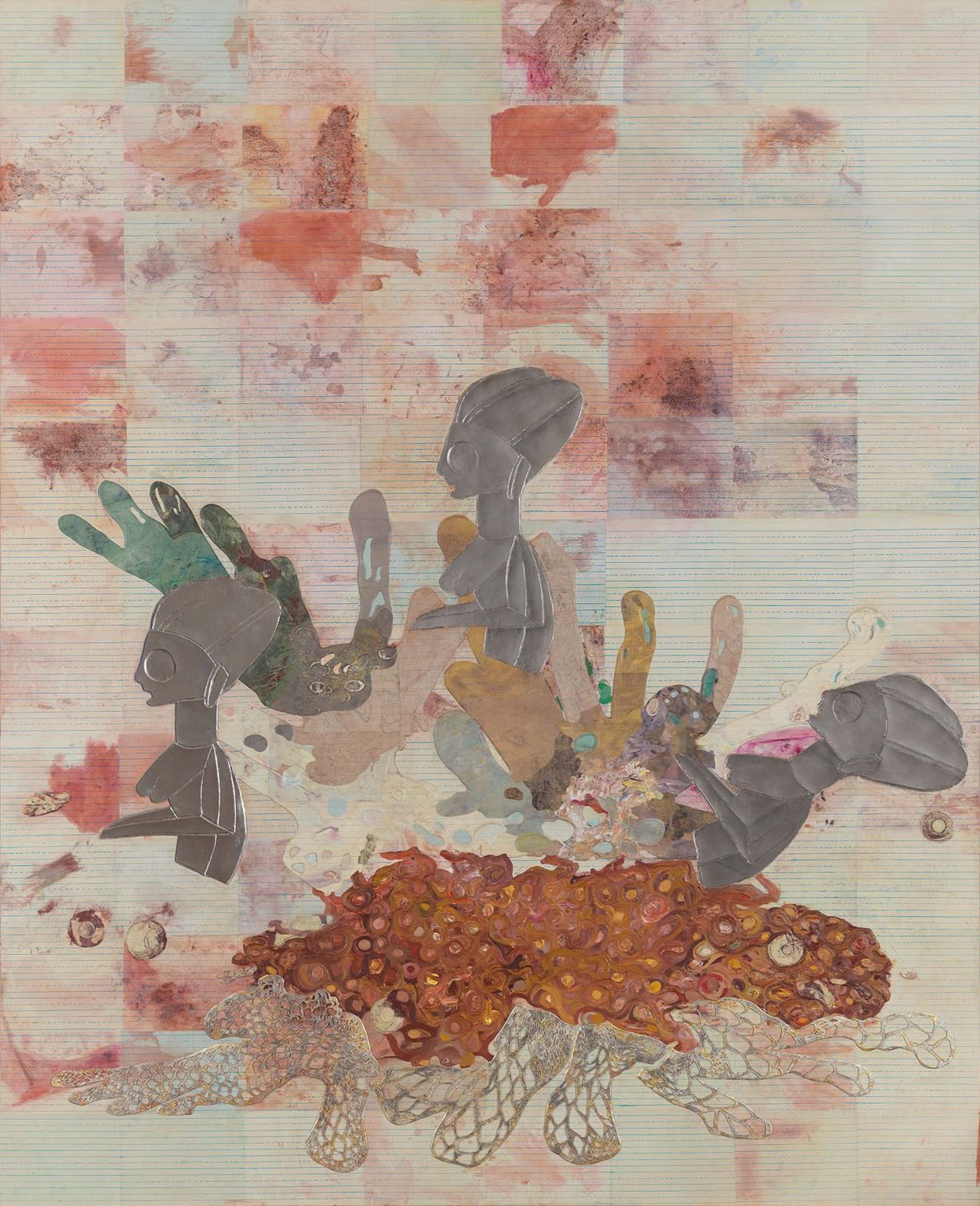
The second extends its focus further still. It exists in cosmic time, beginning in the mythical pre-historic past and reaching out into the far-flung future. Between these two points – in place of the events which have created the world of the present day: capitalism, colonialism, the emergence of the nation state – there is usually a void, and we are instead given a timeline that jumps back and forth between pyramids and spaceships. For instance, Chris Ofili fuses Homeric and religious myth with celestial fantasies about contact with alien lifeforms. In his sculpture Annunciation (2006) – featured in In the Black Fantastic – a golden Mary and a black pregnant Gabriel (more alien than angel) press their naked bodies up against one another.
Both approaches respond to the problem of whether it is possible to imagine something like a black modernity. Standing in the way is the existence of actual modernity, whose defining features the genre usually understands to be racism and slavery (but also, as in the images of greed and consumption in Wangechi Mutu’s animation The End of eating Everything, 2013, the destruction of the environment).
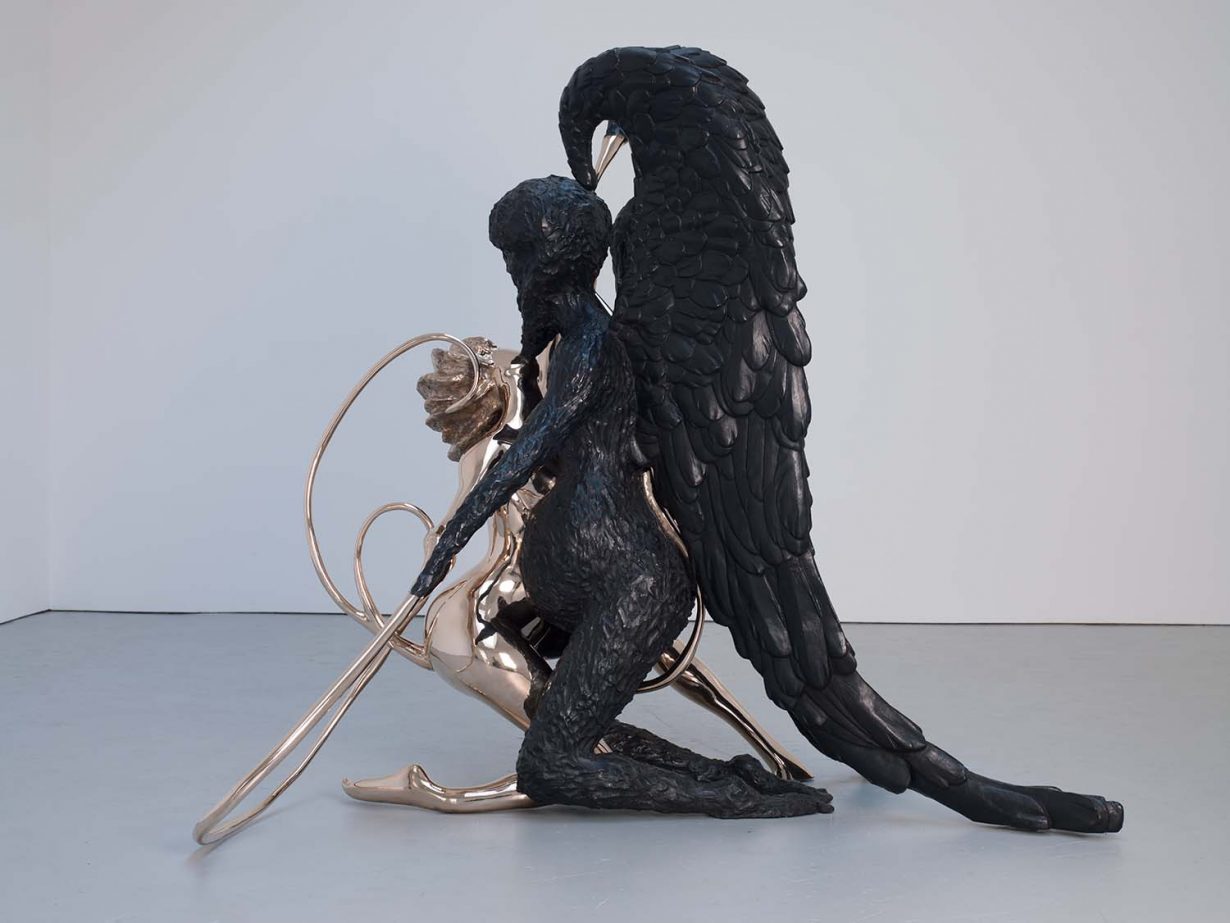
Coined by cultural critic Mark Dery in his 1994 essay ‘Black to the Future’, Afrofuturism from the moment of its inception was concerned with understanding how it was possible to enact a break from modernity by imagining what Dery called ‘possible futures’, or paths not taken, as an alternative to our present world which is so saturated with suffering that little within it seems salvageable. There are of course other visions of the future but these are, Dery insisted, ‘owned by technocrats, futurologists, streamliners and set-designers’ – a grouping which is ‘white to a man’. The cultural critic’s immediate focus was on fiction – turning to sci-fi novelist Samuel R. Delany or the DC Comics superhero Icon – but the problems emerging from this medium were present across artforms.
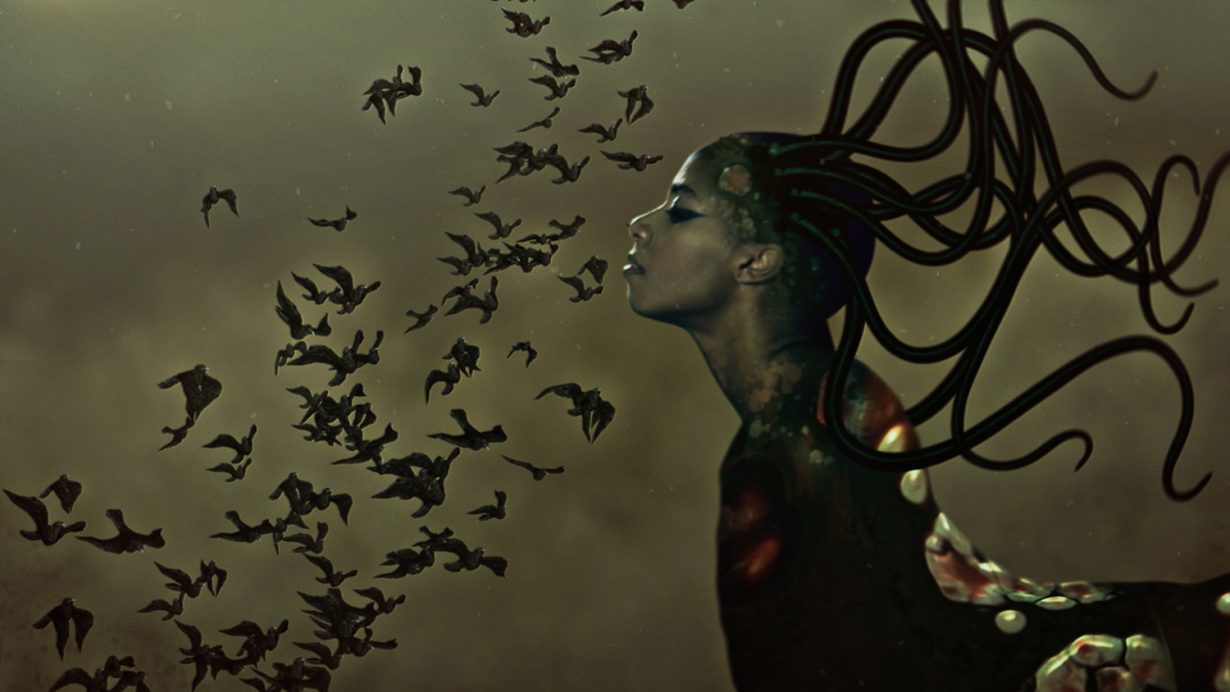
An instructive intervention came from the critic Greg Tate, writing in 1992, who took issue with the erasure of what he called the ‘affirmative aspects of blackness’ in Delany’s novels. Pushing back against such criticism, Delany insisted that part of what it meant to imagine something beyond modernity was to abandon the idea that one had to fight ‘the fragmentation and multicultural diversity of the world […] by constructing something so rigid as an identity’.
At his best, Delany is able to present social identities and structures as subordinate to technology and chance which he uses to explain how this fragmentation occurs in practice. In ‘The Star Pit’, a story from 1965, he describes how the first manned inter-galactic voyage became possible: ‘Through some freakish accident, two people had been discovered who didn’t crack up at twenty thousand light years off the galactic rim, who didn’t die at twenty-five thousand.’
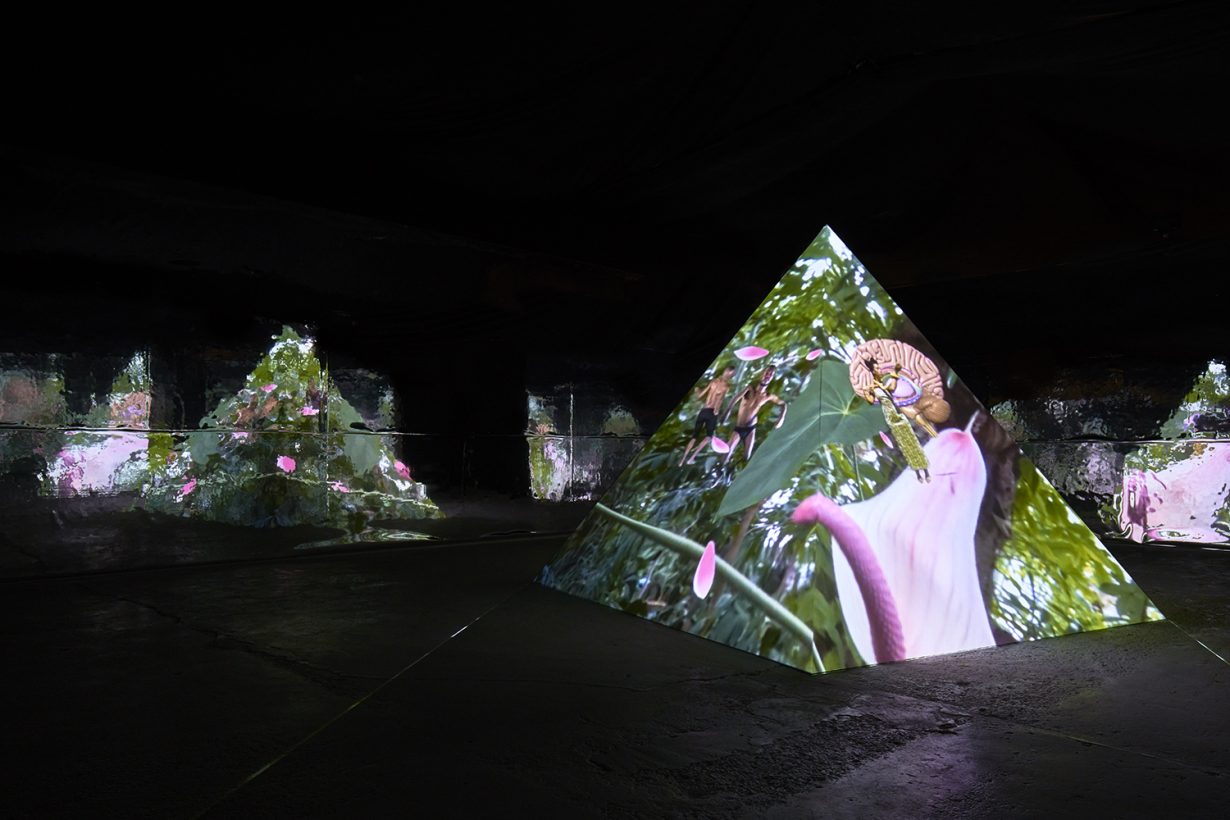
Inhabitants of Delany’s world entertain emptying the asylums in search of other psychological freaks capable of galactic travel, but to no avail; the chosen are not marked out by features that overlap with any socially recognizable categories. Rather, technology and chance create these classifications. Where this flight into fantasy leaves the identity of race is left deliberately unclear. In this mode, Afrofuturism seeks merely to leapfrog the present, making our own social categories appear alien in the process.

Writing in 2003, the filmmaker and theorist Kodwo Eshun described Afrofuturism as a ‘program for recovering the histories of counter-futures’, a description which gets at both the power and limitations of the genre. What is lost? Through its often-totalizing understanding of actual history as endless suffering, the genre, in attempting to break with European modernity, breaks instead with the radicalism of actually-existing black modernism. In its worst instantiations, invocations of ideas about transcending all social, sexual and racial categories can often come across as cheap mysticism, reliant on supposed connections between black people and a mythic regal past that is alarmingly similar to the ideology of European fascism. This is a tendency to which Afrofuturism in its more celebratory modes falls victim.
Of course, to engage with this oeuvre in such an argumentative way might be to miss the point. All artists rely in some sense on fundamental delusions or misrepresentations as a springboard. The important question should therefore be, what formal innovations does this playful space open up? Here the symbols of royalty, of pre-modern notions of a harmony with nature, of an inherent black spirituality are so well worn that it is difficult to imagine how one could turn to these themes without relying on cliché.
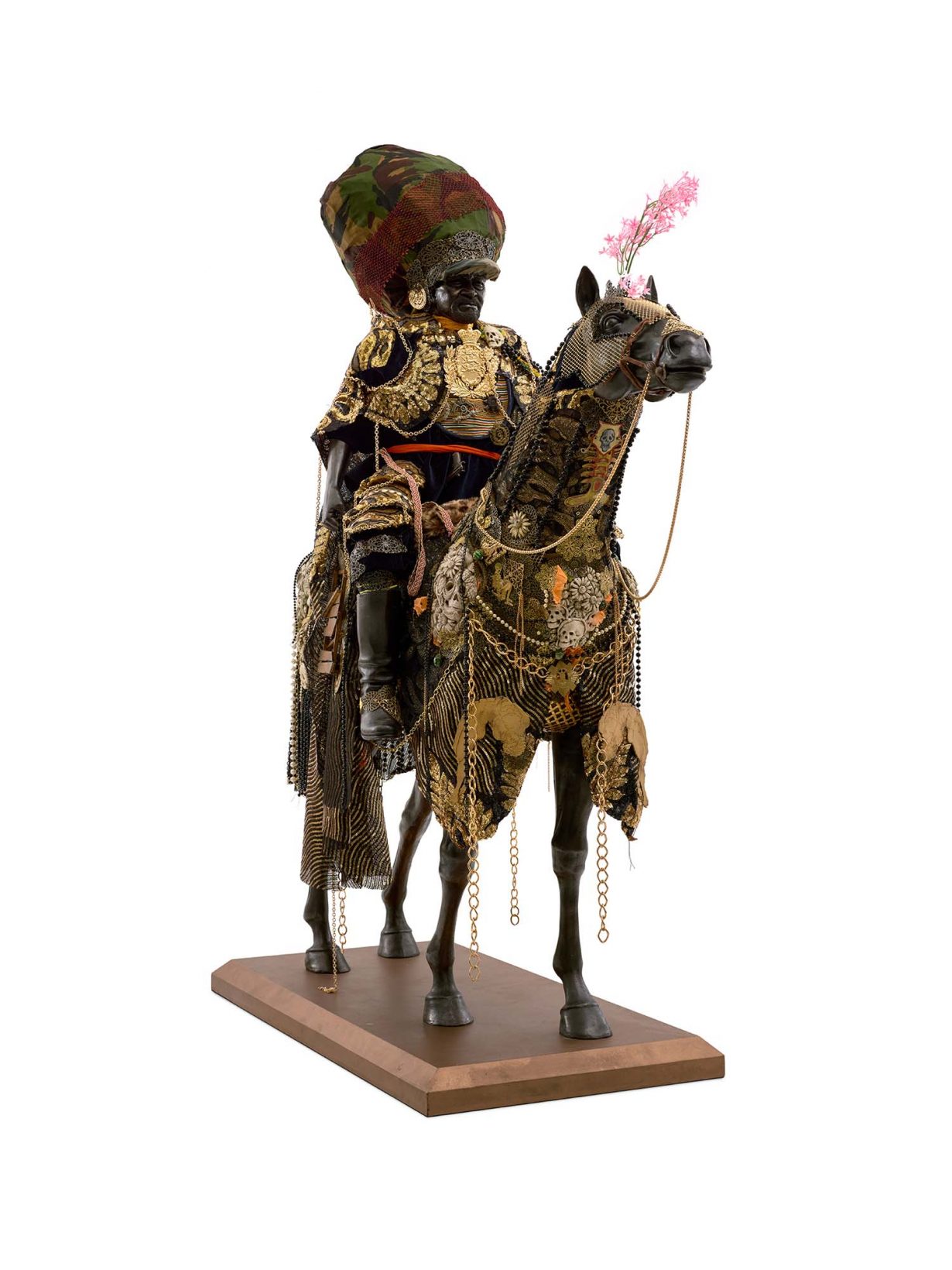
One reason for this might be the fact that Afrofuturism within the visual arts exists within the same representational world as mass-produced popular culture. (The artist Lina Iris Viktor, exhibited at the Hayward, once filed a lawsuit against Kendrick Lamar for allegedly appropriating her work in the music video for the rapper’s Black Panther soundtrack song.) The further Afrofuturism has been able to move from this market-dominated vision of culture, the more autonomously it has been able to think about the future. Much of the more interesting work assembled within the Hayward’s exhibition, such as Hew Locke’s sculptures and Kara Walker’s film recreations of racist violence, avoids these cheap solutions. They preoccupy themselves with the work of facing the future with two feet planted firmly in the present, interpreting the complex forms of identity taking shape in the here and now. In doing so, they point forward towards a more possible future.
